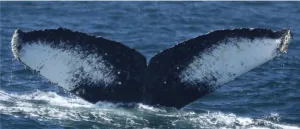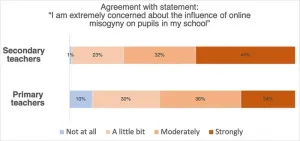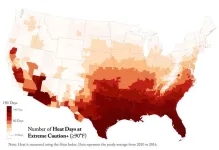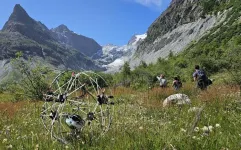(Press-News.org) Although preventing all the consequences of climate change is now impossible, we can adopt policies to mitigate its impact. In a set of policy recommendations produced by the University of Jyväskylä, researchers examine the development of sustainable livelihoods in the Sundarbans, a coastal region of India and Bangladesh that is vulnerable to the impacts of climate change. The Sundarbans is one of the largest threatened mangrove ecosystems, which efficiently store carbon dioxide and protect coastal areas from cyclones.
In a research project funded by the Research Council of Finland entitled Sustainable Livelihoods and Politics at the Margins: Environmental Displacement in South Asia, researchers Sirpa Tenhunen, Mohammad Jasim Udd and Dayabati Roy have prepared recommendations for developing sustainable livelihoods in coastal areas where fragile mangrove forests occur.
Climate change will increase the intensity and frequency of tropical cyclones in the region and raise sea levels, increasing salinity and threatening settlement in the most vulnerable areas. However, land level fluctuations are nothing new in this estuary, as the Sundarbans have been and continue to be shaped by the silt carried by rivers from the Himalayan mountains. Strips of land are constantly rising from the shore, while elsewhere they are being submerged.
The report makes the following main recommendations for promoting sustainable development in mangrove forest areas:
Addressing the multiple drivers of vulnerability in coastal communities
Fostering sustainable livelihoods that do not exacerbate the adverse effects of climate change and harm the environment
Adopting participatory approaches that enable the recognition of local communities’ unique needs, perspectives, and innovative practices in tackling the effects of climate change
Improving coastal communities’ resilience to disasters
Regulation and control to shrimp farming
The researchers recommend addressing many of the vulnerabilities of coastal communities. These include the uncontrolled expansion of shrimp farming that threatens the fragile ecosystem and livelihoods of the region. As shrimp farms are established on agricultural land, they are taking over from the most labour-intensive livelihoods, with mangrove forests among those areas being cleared for shrimp farms. The salty water that is piped into shrimp farms makes the land unsuitable for farming, while the chemicals used in the farms pollute the environment.
The researchers also recommend regulation and control of shrimp farming. Instead of relocating populations, which is difficult to implement, they propose supporting environmentally friendly livelihoods in the area. An example of these would be freshwater harvesting and the associated fish farming and cultivation. On lands where the salinity levels are low it is possible to grow salt-tolerant crops. Many inhabitants already earn their living by harvesting forest products without damaging the forests. These livelihoods should not be discouraged in forest conservation. Ecotourism and agroforestry also offer sustainable livelihoods. Support schemes for residents should allow mobility, as many residents combine paid work in the city with their rural livelihoods.
Storm shelters, floodwalls and levees to protect residents from storms
Storm shelters, floodwalls and levees play a key role in protecting residents from storms. These vital infrastructures need to be maintained and managed in partnership with local communities. The corruption associated with infrastructure construction and the distribution of government benefits must be limited through monitoring and awareness-raising.
The policy brief has been published in the University of Jyväskylä’s Wisdom Letters series.
For further information:
Sirpa Tenhunen, sirpa.l.tenhunen@jyu.fi,
+358504733858
END
Researchers make recommendations for promoting sustainable development in mangrove forest areas
2025-02-26
ELSE PRESS RELEASES FROM THIS DATE:
Shark activity in South African reef revealed by citizen scientist scuba divers
2025-02-26
Shark sightings by scuba divers reveal the movements of marine predators throughout the year, according to a study published February 26, 2025 in the open-access journal PLOS One by George Balchin, William Hughes and colleagues at the University of Sussex, U.K., and Aquaplanet Dive Center, South Africa.
Many sharks move through different habitats as they follow food or search for mates. Since they are major predators, they change the shape of the ecosystems they visit. Examining these movements is key to understanding the health of ocean habitats as well as the impacts of human activity, but it is notoriously ...
Eavesdropping on whale songs sparks new discoveries in whale ecology
2025-02-26
Eavesdropping on baleen whale songs in the Pacific Ocean reveals year-to-year variations that track changes in the availability of the species they forage on, reports a new study led by John Ryan, of the Monterey Bay Aquarium Research Institute (MBARI), U.S., published February 26, 2025 in the open-access journal PLOS One.
In the vast oceans, monitoring populations of large marine animals can be a major challenge for ecologists. Scientists deploy underwater microphones called hydrophones to study and track baleen whales, which communicate ...
Teachers express extreme concern about influence of online misogyny on students
2025-02-26
In a survey study of 200 U.K. teachers, 76 percent of secondary school teachers and 60 percent of primary school teachers expressed extreme concern about the influence of online misogyny on their students. Harriet Over of the University of York, U.K., and colleagues present these findings in the open-access journal PLOS One on February 26, 2025.
Prior research has shown that young students are increasingly exposed to social media content created by misogynistic influencers, such as Andrew Tate and members of the incel movement. However, few researchers have examined ...
Bluesky is similarly structured to other social media, but with some unusual features
2025-02-26
A comprehensive analysis of social media platform Bluesky provides insights into its structure, polarization and political leanings, in a new study published in open-access journal PLOS One on February 26, 2025, by Dorian Quelle and Alexandre Bovet, from the University of Zurich, Switzerland.
Many social media platforms rely on proprietary algorithms to recommend content, a methodology that has received increasing backlash over the years. However, Bluesky instead allows users the ability to curate their experiences. The authors of the present study analyzed the social media site’s trajectory from its invite-only launch ...
Fossil eggshells from Utah's Cedar Mountain Formation include Cretaceous period eggs from 3 feathered bird-like dinosaurs, 2 herbivorous dinosaurs, and a crocodile-like species found for the first tim
2025-02-26
Fossil eggshells from Utah's Cedar Mountain Formation include Cretaceous period eggs from 3 feathered bird-like dinosaurs, 2 herbivorous dinosaurs, and a crocodile-like species found for the first time outside Europe
Article URL: https://plos.io/42XpPYx
Article title: Fossil eggshell diversity of the Mussentuchit Member, Cedar Mountain Formation, Utah
Author countries: U.S., South Africa
Funding: This research was supported by Canyonlands Natural History Association, Global Creatures, and MagicSpace ...
Study: Extreme heat may speed up aging in older adults
2025-02-26
A new USC Leonard Davis School of Gerontology study suggests greater exposure to extreme heat may accelerate biological aging in older adults, raising new concerns about how climate change and heat waves could affect long-term health and aging at the molecular level.
People in neighborhoods that experience more days of high heat show greater biological aging on average than residents of cooler regions, said Jennifer Ailshire, senior author of the study and professor of gerontology and sociology at the USC Leonard Davis School.
Biological age is a measure of how well the body functions at the molecular, cellular, and system ...
A springtail-like jumping robot
2025-02-26
Springtails, small bugs often found crawling through leaf litter and garden soil, are expert jumpers. Inspired by these hopping hexapods, roboticists in the Harvard John A. Paulson School of Engineering and Applied Sciences (SEAS) have made a walking, jumping robot that pushes the boundaries of what small robots can do.
Published in Science Robotics, the research glimpses a future where nimble microrobots can crawl through tiny spaces, skitter across dangerous ground, and sense their environments without ...
When the wild things are: URI team reports on mammalian daily activity with surprising results
2025-02-26
KINGSTON, R.I. – Feb. 26, 2025 – Animal antics have captured public attention and viral views across the U.S. in the last few years with the advent of mini cameras that capture the movements of animals in front yards nationwide, from bear to deer.
A University of Rhode Island-based group has taken the camera concept one step further and then some, generating a massive dataset of animal images, not for entertainment, but for science.
When the Global Animal Diel Activity Project results were analyzed, researchers made some unique discoveries.
Put together, researchers across the country and around the world generated a more focused picture of animal ...
Morphing robot turns challenging terrain to its advantage
2025-02-26
From mountain goats that run up near-vertical rock faces to armadillos that roll into a protective ball, animals have evolved to adapt effortlessly to changes in their environment. In contrast, when an autonomous robot is programmed to reach a goal, each variation in its pre-determined path presents a significant physical and computational challenge.
Researchers led by Josie Hughes in the CREATE Lab in EPFL’s School of Engineering wanted to develop a robot that could traverse diverse environments as adeptly as animals by changing form on the fly. With GOAT (Good Over All Terrains) they have achieved just that – and created a new paradigm for robotic ...
New study reveals how rogue planetary-mass objects form in young star clusters
2025-02-26
A groundbreaking study published in Science Advances sheds new light on the mysterious origins of free-floating planetary-mass objects (PMOs)—celestial bodies with masses between stars and planets.
Led by Dr. DENG Hongping of the Shanghai Astronomical Observatory of the Chinese Academy of Sciences, an international team of astronomers used advanced simulations to uncover a novel formation process for these enigmatic objects. The research suggests that PMOs can form directly through violent interactions between circumstellar disks in young star clusters.
The Mystery of Rogue Planetary-Mass ...









